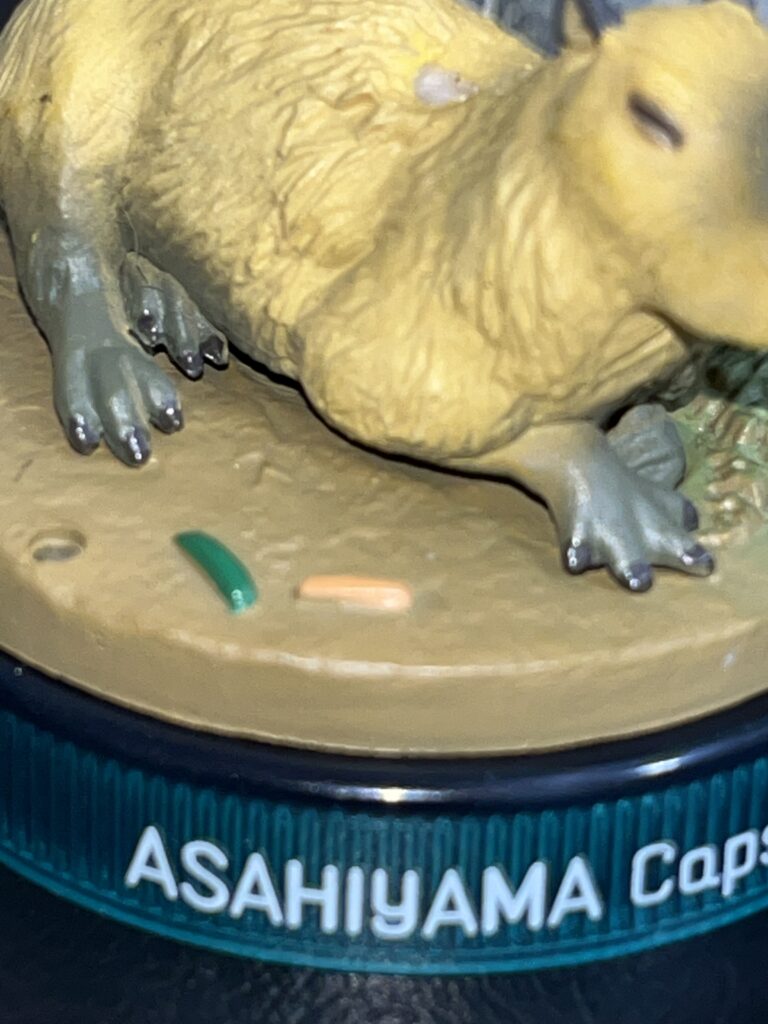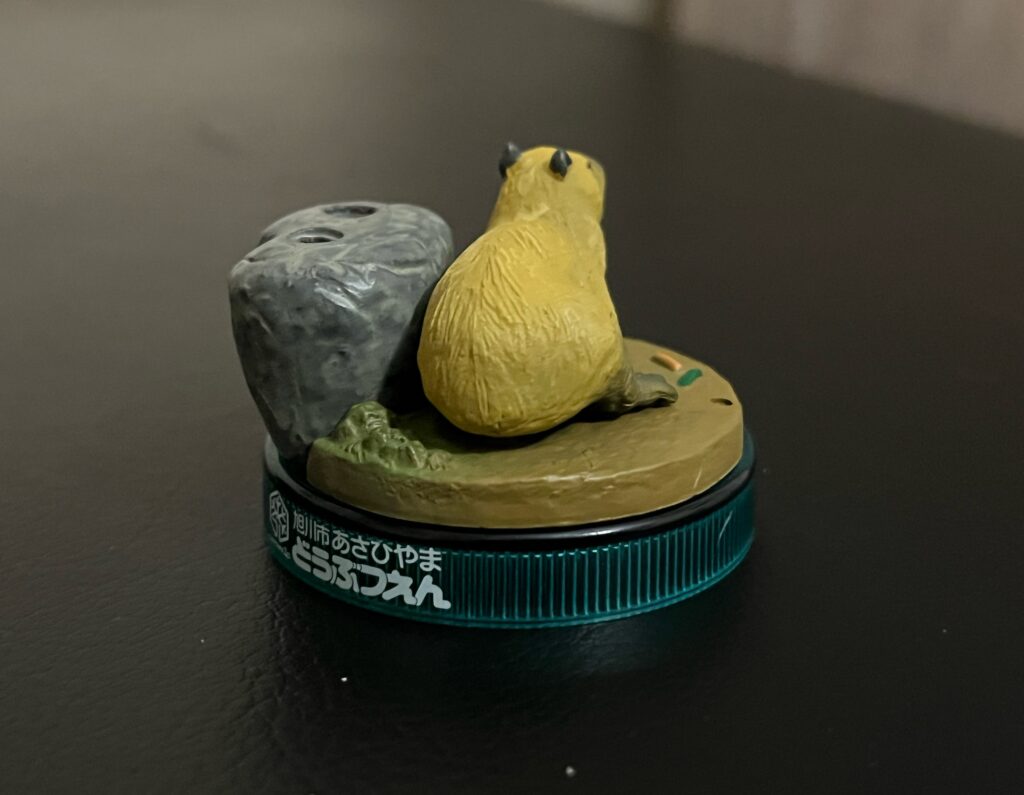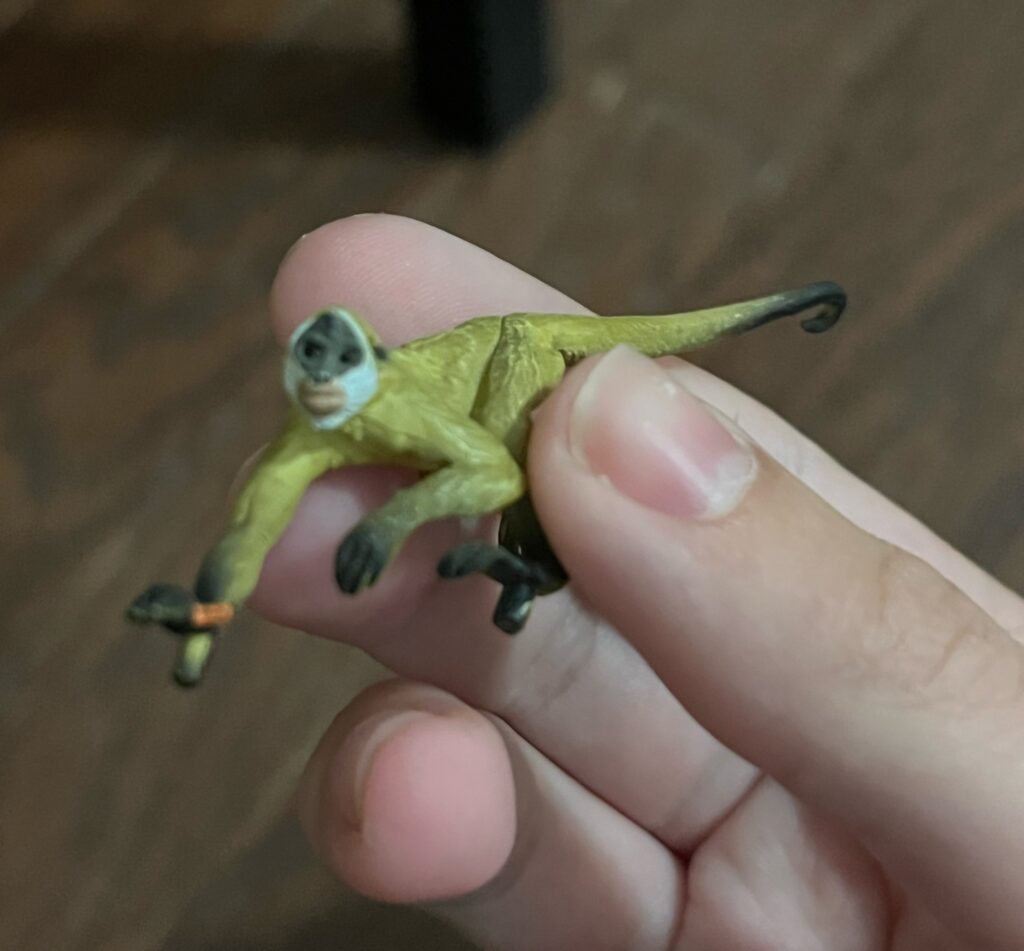Review and images by Sam; edited by bmathison1972
The capybara (Hydrochoerus hydrochaeris) is the world’s largest rodent. It is native to South America, in the countries of Brazil, Paraguay, Uruguay, Argentina, Venezuela, Colombia, and Guyana. It eats grass and fresh fruits including citrus fruits and watermelons. Its ecological niche is to create new habitats for the other animals of its native ecosystem by eating the grass. Local names for the capybara in the languages of its native countries include capivara, chigüire, chigüiro, carpincho, and watrush. The capybara is listed as “Least Concern” on the IUCN Red List, but habitat destruction for agriculture, poaching, and the illegal exotic pet trade all pose a threat to the species. There is another species of capybara, the lesser capybara (H. isthmius), from Panama down to northern South America, but it is not as known and as studied as its larger cousin. The lesser capybara also listed as “Data Deficient” on the IUCN Red List.
As you probably already know, capybaras are my favorite animal. I have quite a few plush toys and models of capybaras, and I recently bought off of eBay the capybara made by Kaiyodo for its Asahiyama Capsule Zoo line, which is exclusive to the Asahiyama Zoo in Japan. She came in today after being imported from Japan, and I decided to do a review on her, my last one before I go back to college. I named my capybara “Patrícia,” and she will be referred to as such throughout the review.

This model is actually an entire vignette that also features a black-handed spider monkey (Ateles geoffroyi), but since capybaras are my favorite animal, I bought it specifically for the capybara. Needless to say, I was not disappointed by this model.
Patrícia is sculpted in a relaxed, laying-down position, showcasing the chill personality capybaras are known for. She is anatomically correct, with the characteristic barrel-shaped body and square head, and four toes on her front feet and three on her back feet, each painted with black on each tip to replicate claws.

This specimen’s fur is not brown, but a beautiful golden-yellow color, and has nicely realistic texturing. There is a hole in her back where the spider monkey would connect, but it does not cause any negative visual impacts when it is just the capybara being displayed.

Patrícia is on a base that requires some assembly, in the form of snapping it onto two pegs on the bottlecap. The base looks like a zoo habitat, complete with rocks, grass, and mud, as well as an orange slice and a piece of hay floating in the mud. There is even an imprint in the mud where the capybara is placed! This is only just an example of the attention-to-detail of the toys of this line; I have seen the polar bear figure that has figures of zoo visitors that look as if they are viewing the animal through glass!

Overall, this is probably the best capybara toy on the market. She is accurate and elaborately detailed. It even rivals CollectA’s model, which I also own. I highly recommend her to anybody who loves capybaras or animals in general, or anybody who collects toy animal figures. As of the time I wrote this review, this figure is quite rare, with only one other of this figure on eBay (that comes with the paper it is supposed to come with). So, if this review inspired you to get this beauty, now would be the best time to do it before it is gone!

Disclaimer: links to Ebay and Amazon on the AnimalToyBlog are affiliate links, so we make a small commission if you use them. Thanks for supporting us!



